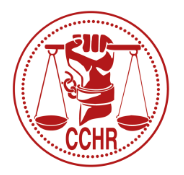The condition of Bipolar in Children and teenagers has seen a huge diagnosis increase in the past decade. In fact, it has increased by 40 times. During this same time, the diagnosis of adult bipolar disorder doubled.
This is a dangerous trend. Very young children, barely out of infancy are given powerful antipsychotic drugs to control this supposed condition.
This sometimes chaotic and frustrating time in a child’s life used to be called “the terrible twos.” But the early assertion of independence has a new name; bipolar in children.
Six years ago, a little girl died from a cocktail of medications being given to her, allegedly to control a condition of bipolar in children. Rebecca Riley had been diagnosed with bipolar at the age of 2 ½.
This toddler was prescribed 3 separate powerful pharmaceuticals; Clonidine, a blood pressure medication, Seroquel, an anti psychotic and Depakote which is used to control seizures. On December 13th her small body was killed by this onslaught of drugs;
including at least one (Seroquel) that had never been tested on children.
Almost one million children have been diagnosed with bipolar in children. This makes this condition suddenly more prevalent than diabetes and autism combined.
By their own admission, the field of psychiatry has no lab test for their principle diagnosis. And the criteria for the conditions they diagnose are not even constant.
While psychiatrists debate the validity of their diagnosis and tests for bipolar, depression, ADD and ADHD and other mental afflictions, lives are being lost.
Reports of deaths and extremely dangerous side effects linked to the use of antipsychotics in the young are mounting. FDA data collected between the years of 2000 to 2004 found no fewer than 45 deaths of children, most likely due to the use of these drugs. In
addition, 1,328 bad side effects were recorded. Some of the side effects were
referred to as “life-threatening.”
Although drug companies are required to file reports to the Federal Drug Administration’s Adverse Events Reporting System, this database has only 1% to 10% of these deaths and side effects recorded. This is according to clinical pharmacologist Alastair J.J.
Wood, who is an associate dean at Nasheville’s Vanderbilt Medical School.
Chief of child and adolescent psychiatry at Duke University School of Medicine John March admits “We’re conducting a very large experiment on our children.”
Even if a child survives the use of antipsychotic drugs, the effects of their use can linger, incapacitating that child for life.
Teenager old Rex Evans took one of the atypical antipsychotic drugs several years ago, but he still suffers from tardive dyskinesia (TD) which results in involuntary jerking movements and facial grimacing. There is no known cure for TD.
Deaths and permanent side effects have done nothing to halt the prescription of these powerful drugs to the young. In fact, prescriptions of psychiatric drugs increased fivefold from 1995 to 2002. These numbers do not even include prescriptions at residential
treatment centers and psychiatric hospitals.
As frightening as these figures are, it is not too late to protect the youngest and most vulnerable among us. With the knowledge of their destructive side effects, parents can do their own research and decide how best to treat their children.
Medical professionals (not psychiatrists or psychologists) can perform proper medical tests to detect any underlying physical causes of mental health symptoms. We have a right to choose such tests and treatment.
http://www.cbsnews.com/2100-18560_162-3308525.html
http://www.usatoday.com/news/health/2006-05-01-atypical-drugs_x.htm
Free Baker Act Help - Call Us: 800-782-2878
info@cchrflorida.org



0 Comments